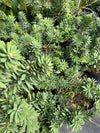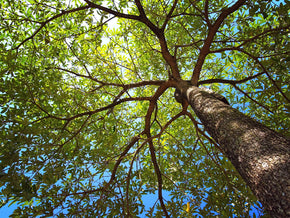Spring is finally here, and it’s time to get your flower beds ready for a full season of gardening! Take the time to clear out the last season and welcome the new.
When you make sure to properly care for your garden, it will pay you back by flourishing year-round. These simple tips will make your spring gardening season much smoother and more enjoyable.
1. Prepare your tools.
The beginning of spring is the perfect time to get your gardening tools in tip-top shape. Review the tools you have in your arsenal, and be sure to clean and sharpen any tools that need attention. You may also want to add penetrating oil to prevent your tools from corroding and make them last longer.
After going over your inventory, replace tools that are beyond repair or order some new tools online to expand your collection. There’s nothing like a fresh set of gardening tools, ready to go before the start of spring!
It’s also a good idea to make sure you have plenty of soil and fertilizer on hand, along with any other gardening accessories you may need. Having the right supplies will make a huge difference in your gardening experience, as you’ll be able to avoid annoying stops and starts.
2. Pull the weeds.
Weeds are easier to remove when the ground is still soft from winter. Don’t wait until the end of summer when the soil is hard and dry! Now’s the time to remove them before they grow deep roots or go to seed.
Place your weeds in a compost pile or burn them after removing them from the soil. This will kill them before their seeds have the chance to germinate. Don’t leave any living weeds in your flower beds, or they’ll compete with the plants in your garden, and it will be a real headache to try and remove them.
3. Remove garden pests.
Find and remove any pests that are hibernating in your flower beds. This will be a lot easier to do now than it will be in the middle of spring and summer. Be sure to check the crowns of your perennial plants for pests like slugs, snails, and aphids. They tend to hide in such places while sheltering during the winter.
If you didn’t clear your pots of summer bedding last year, make sure to check them for white-vine-weevil larvae. These pests feed on plant roots in the compost. After destroying any larvae you find, treat your bedding using chemical drenches or parasitic nematodes.
4. Clear out debris and dead leaves.
Give your flower beds a fresh start. Spruce up the entire area, and remove any debris and leaves that are dirtying up your flower beds. Add any dead organic matter to the compost.
Also, cut any browned foliage on your perennials. This will make room for the new growth that’s about to push through. If winter temperatures have frozen and thawed your perennials, they may have popped up out of the ground. Push them back down into the soil so their roots are covered. Then, give them some water and a little extra mulch.
5. Remove winter protection.
Don’t forget to remove any covers and wraps you set up to protect your plants during winter. Protective measures like burlap barriers and plastic covers are unnecessary as the weather starts to warm.
The same goes for any stakes you’ve added to support new trees if you planted them in the ground more than a year ago. Remove the stakes and let trees start to stand on their own.
6. Prune summer-blooming shrubs.
Early spring is an ideal time to give trees and shrubs a good pruning. This will allow you to shape the plant before it starts to bud.

Prune any trees and shrubs that bloom on new wood. Here are some plants you may consider pruning during this time of year:
- Buddleia (Butterfly Bush)
- Cornus Canadensis (Flowering Dogwood)
- Lonicera (Honeysuckle)
- Hydrangea Paniculata
- Cercis (Redbud)
- Summer-blooming Spirea
- Lagerstroemia (Crepe Myrtle)
- Rose
- Wisteria
On the other hand, there are several plants that you should NOT prune during early spring since they bloom on old wood. Here is a list of plants you should refrain from pruning until after they bloom:
- Spirea
- Camellia
- Rhododendron
- Forsythia
- Hydrangea Macrophylla (bigleaf)
- Syringa (Lilac)
- Magnolia
- Kalmia (Mountain Laurel)
- Weigela
Always use sharp, thoroughly sanitized pruners before you start snipping. This helps prevent the spread of any diseases your plants may have. Also, add some fertilizer to the soil when pruning; this will help supply your plants with enough nutrients to heal after being pruned.
7. Repair or maintain fences, gates, and trellis.
Making sure your structures are up to snuff will give you more time to spend in your garden throughout the spring and summer months. Check to make sure your fences, gates, and trellis are in good condition. If you notice any signs of damage or decay, replace them promptly.
Clean off any winter buildup from your gates and fences using a power washer. Remove any stubborn mildew or moss using a stiff cleaning brush. You may also wish to apply a few fresh coats of stain or paint to make them look like new. Just be sure to allow the wood to dry completely before painting.
8. Prep the soil.
Get your soil ready for planting! After the cold of winter, soil is usually hard or compacted, so you’ll probably need to loosen it up by tilling or turning. To do this, use a tiller or sharp spade, and continue working the soil to about a foot’s depth.
Then, add your compost and any other soil amendments. You could test your soil’s pH and nutrient levels using a soil test kit to help inform you about which materials your soil would benefit from.
If your soil is in poor condition or is clay-based, it’s a good idea to add a layer of compost to improve its nutrient content, ability to retain water, and overall texture. If your soil quality is so poor it’s beyond fixing, it might be a better idea to start from scratch by building a raised flower bed on top of it.
9. Order summer-flowering seeds and bulbs.
It’s always smart to prepare for the season ahead. During late winter and early spring, it’s the perfect time to start planting your summer-flowering seeds and bulbs in the wet soil.

Lots of summer-flowering seeds and bulbs can be ordered online. Look through online gardening catalogues for some new varieties that you haven’t grown before.
10. Check plants for winter damage.
Did cold temperatures and brisk winter winds damage any of your existing plants? Prune back any damaged, broken, or dead branches from trees and shrubs. Hopefully, the winter months weren’t too cruel to your flower beds. If they were, clear out any plants that have been killed by frosty weather conditions.
11. Divide perennials.
Spring is a time for new growth in your flower beds. Just before this season is the ideal time to divide any perennial plants that are overgrown or exceeding the area where you’d like to keep them.
Divide perennial plants and replant the separated clumps. You could also give away parts of your perennials to friends and neighbors if they’ve become too much for you to handle.
Avoid dividing any perennials that have already begun to bloom or that are in bud. Wait to separate these after they bloom or in the early fall.
12. Start planting.
Make your spring planting season easier by planning ahead of time and starting your plants indoors. This is a good idea for hardy vegetables like artichokes, potatoes, onions, and certain varieties of lettuce.
Familiarize yourself with the instructions and information about each flower and vegetable you intend to plant throughout the upcoming season. This will help you avoid unpleasant surprises and will ensure you’re well prepared to help your plants thrive.
13. Prevent future problems.
If your garden has suffered from certain problems like crabgrass or uncontrollable weeds, it’s a good idea to get out ahead of these issues this year. There are plenty of treatments you can apply to your garden and flower beds to prevent persistent problems from cropping up.
Do your best to think through problems you’ve had with your garden in the last year or so, and get ahead of them by using preventative methods.
14. Edge flower beds.
The end of winter and beginning of spring is the best time to edge your flower beds. This will tidy up the appearance of your landscaping, and it will also create a neat “shelf” to hold mulch that you will add later.
You can use a long-handled edging tool to cut the edges of your flower beds. Or, if you have one, you can use a power edger.
15. Add mulch.
After doing your early planting and planning out where the rest of your plants will go, add a thick layer of mulch to your flower beds. If you wait too long to do this step, you may be leaving room for weeds to crop up, and you don’t want that!
Just like that, your flower beds are ready for spring! Enjoy the warming weather and the beautiful blooms that come with this fruitful season.










